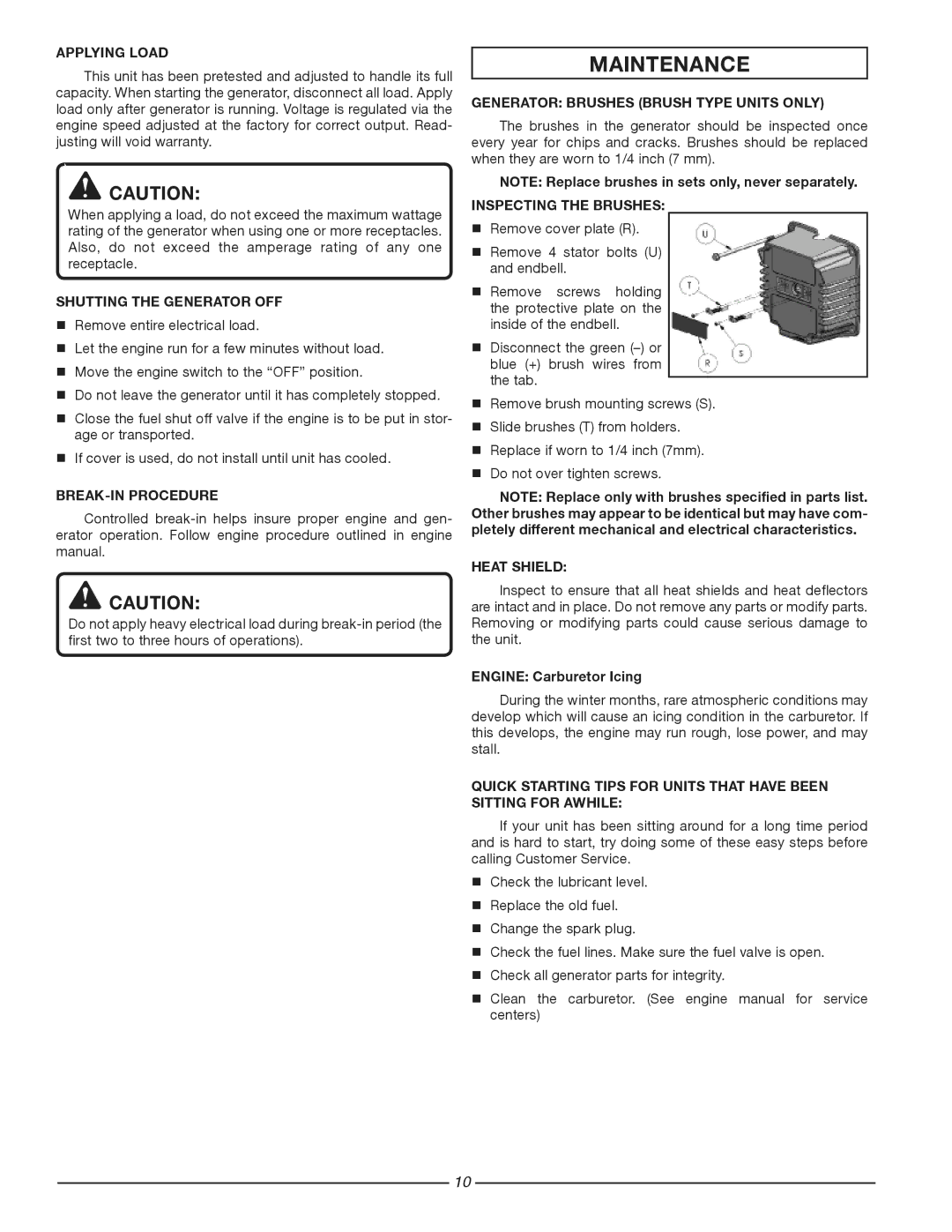HG1800 specifications
The Homelite HG1800 is a powerful and versatile generator designed for both residential and light commercial use. Known for its reliability and efficiency, this generator is particularly popular among homeowners looking for a dependable backup power source during outages and those who need portable electricity for outdoor activities.One of the standout features of the Homelite HG1800 is its robust 1800-watt output, which allows it to power multiple appliances simultaneously. With a peak output of 2300 watts, the generator can easily start larger devices such as refrigerators, power tools, and air conditioners. This makes it an ideal choice for emergency power needs as well as recreational purposes, such as camping or tailgating.
The generator is equipped with a 4-stroke, air-cooled engine, designed for efficient fuel consumption and longer operating times. It has a runtime of up to 9 hours at a 50% load, ensuring that users can rely on it throughout the day and into the night without frequent refueling. The engine is designed to meet stringent emissions standards, making it an environmentally friendly choice for those conscious about their carbon footprint.
Portability is another key characteristic of the Homelite HG1800. Weighing only around 50 pounds, it features a compact design with built-in handles, allowing for easy transport from one location to another. Whether you’re powering a construction site or enjoying a weekend getaway, this generator can be easily loaded into a vehicle or moved around your yard.
The generator also embraces user-friendly technologies. It features a simple recoil start mechanism that ensures quick and reliable starting, even for those who may not have extensive experience with generators. Additionally, the Homelite HG1800 includes multiple outlets, including two 120-volt AC outlets and one 12-volt DC outlet, providing versatility in what devices can be powered.
Safety features of the HG1800 generator include overload protection, which automatically shuts off the unit if it is overloaded, protecting both the generator and the connected devices. It also has a low oil shutdown feature, which halts operation when oil levels are too low, preventing engine damage.
In summary, the Homelite HG1800 generator is an excellent choice for those in need of a reliable, portable, and efficient power solution. With its solid wattage output, user-friendly design, and essential safety features, the HG1800 stands out as a practical and valuable addition to anyone’s power supply options, catering to both emergency and recreational power needs.

